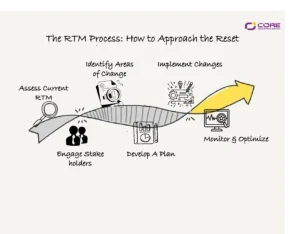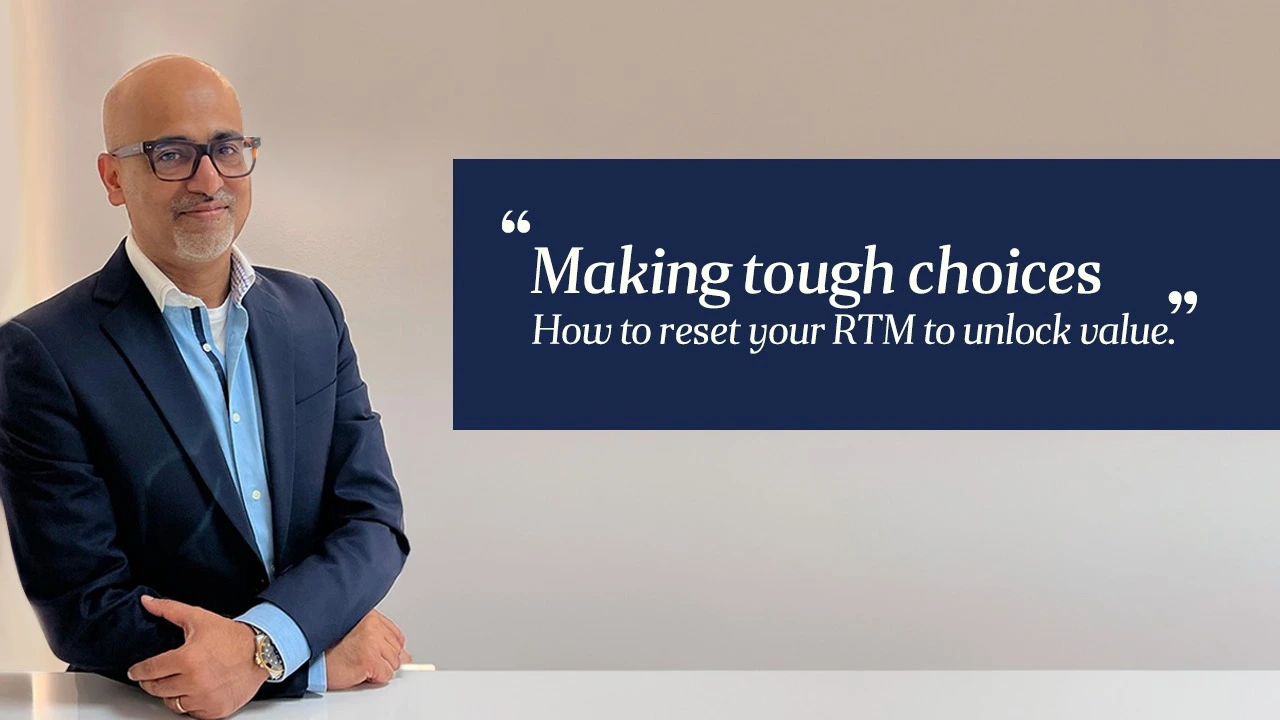The tough part about doing hard things is what makes them worthwhile. The hardest part of fixing a broken Route to Market (RTM) is admitting it is broken in the first place.
When your business is struggling, and the analysis points in the direction of a problem with the RTM, it is a lot easier to look away than take it head on. The temptation is to hold out for the perfect time or to simply hope that the problem will fix itself. We wait for a perfect moment or we simply lack the will to change. A common problem a lot of businesses face particularly in Saudi.
Kingdom of Saudi has always held out great promise for FMCG companies with its market size of 20B$ with a population of 34M+ and growing. As the region’s largest consumer base in the Middle East, the country also benefits from having a high GDP of approximately $2.03 trillion USD (PPP) in 2023. Saudi Arabia’s economic strength and growth prospects create significant opportunities in the FMCG sector (World Bank, 2023). As the country continues its push for Vision 2030, aimed at diversifying the economy, FMCG companies are poised for even greater expansion in the years ahead (Oxford Business Group, 2024).
But here’s the thing. How many companies are willing to bite the bullet and admit that their businesses haven’t delivered on the promise and a new and different approach is needed to reset and restart their business in Saudi Arabia?
Why RTM Matters
While getting it right with your route to market may not be the only thing to fix, it can unlock tremendous value. A number of FMCG companies are saddled with a high cost to serve business model in KSA. Most major multinational companies have in the last 10 years moved from 100% distributor led route to market in Saudi to handling the modern trade directly through their own team. Many of them are facing challenges of high fixed costs (bloated structure over time) along side pressure from the modern trade to continuously increase terms.
The modern trade customers are themselves under pressure from the new and emerging channel of para pharmacies and discounters. The discounters are growing at a rapid pace with every day low pricing across their portfolio giving the established modern trade a real run for their money. However they are not large enough to be served directly and so continue to be served by the distributors leading to massive channel conflicts between the directly served customers versus customers served through the distributors. Over and above this there is the matter of Ecommerce which is also rapidly growing putting further pressure on the revenue growth of customers that are being directly served by these companies.
There was another underlying assumption in directly serving the Modern trade customers, which can also be challenged. ‘We can do it better than the distributors” was the foundational assumption. The issues faced by the business in the past like the available talent pipeline within the distributor organization, the distributors not having an efficient supply chain or the unwillingness of distributors to reduce their margins to reasonable levels are all in my opinion no more valid within the current context.
Here’s the thing: The external environment has changed much. The big distributors have also evolved and there is a need to rethink this model. Infact big companies and smaller companies have a unique opportunity to revisit their RTM in Saudi Arabia and tap into the opportunities to grow topline and their bottom line.
I am speaking from my experience of working with large and small companies in Saudi Arabia for the last 10 months. I had the opportunity to work dialogue with the leading distributors in Saudi Arabia as part of a project I have just executed in KSA.
Early Signs of Trouble
The early signs that an RTM strategy needs a reset are often obvious but easy to ignore.
The first thing you’ll notice is missing numbers. When you miss your targets for several quarters in a row, the excuses pile up, but deep down, you know something’s wrong. The other noticeable sign of trouble is spike and dip in performance from one year to the other and the accompanying change of leadership in Saudi And still, change feels difficult. People resist. They tell you to wait for the right time. But in my experience, the right time is here and NOW!
Small Fixes vs. Major Overhaul
Here’s the thing about small fixes—they can work if the problem is small. For example, you might be dealing with distribution losses or underperforming in a specific channel. In those cases, small, incremental changes can do the trick. However, this only works if everyone is honest about the problem.
But what happens when the problem is deep? Generally when there is a persistent performance issue, multiple people would have commented on what they issue might be, but if the solution requires pain to be taken, then it does take tremendous courage to call this out.
This is where you start talking about big decisions—replacing your distributor, rethinking pricing and promotional strategies, doing a complete capability review, or even redefining the approach itself. This is the kind of change that requires bold leadership.
Leadership
You need a leader who’s willing to stick his neck out and drive the change. A leader who is afraid to take risk, can never sponsor change. It’s easier to obfuscate especially if have been in your job for a while. The longer you stay in a role, the harder it becomes to push for a reset.
But a fresh perspective—someone new in a senior position—might just be what it takes to get those changes moving.
Timing
Timing is everything when it comes to RTM overhauls. Ideally, you want to start at the beginning of a new year. Why? Because these projects take time—usually 11 to 12 months to complete. If you start early in the year, you’ve got a full cycle to address the issues without negatively impacting revenue.
The pain of the overhaul is better accepted when it’s understood that the next year will be one of transformation.
But you also need to manage the internal dynamics carefully. You need buy-in from key decision-makers. But here’s a pro tip—keep your operational teams focused on the current business. Don’t disrupt the day-to-day while the overhaul is happening. Remember, it is always better to involve local experts alongside external consultants to guide the team through the phases of change.
External Factors
The external environment plays a huge role in determining when and how you reset your RTM. In Saudi Arabia, for instance, the rise of discount channels like para-pharmacies and discount retailers is a game-changer. The well-established trade channels like modern trade and Pharma chains are being upended. Consumers are flocking to these new options for value, and the FMCG companies are scrambling to adapt.
On top of that, the regulatory landscape is shifting. The Saudi government is encouraging competition, which means the exclusive distribution rights that were once a given are now under challenge. The importation of products is getting easier and this is shaking up the conventional RTM of a lot of the FMCG brands.
The Key Benefits of a Major Overhaul
So why go through all this trouble?
The benefits of undertaking a major RTM overhaul are multifold. The most obvious one is that it usually leads to lower costs. You’ll streamline processes, cut unnecessary expenses, and improve your bottom line. But more than that, it creates a more agile and competitive business that’s ready to adapt to market changes.
The RTM Process: How to Approach the Reset

Revamping an RTM strategy requires a structured approach. Here’s how I typically tackle it:
1. Assess the Current RTM Strategy: Take an honest look at where things stand.
2. Engage Key Stakeholders: Get buy-in from the right people and ensure alignment on goals.
3. Identify Areas for Change: Whether it’s your distributor, your pricing, or your operations, pinpoint what needs to go.
4. Develop a Plan: Outline clear, actionable steps for the reset.
5. Implement Changes: It is better to make changes in one go and take the pain- Changes can be phased in as well.
6. Monitor and Optimize: Keep an eye on the progress and make adjustments where needed.
Good is the enemy of great.
At the end of the day, it isn’t about getting it perfect. It’s about recognizing when things need to change and having the courage to make those changes. It’s about adapting to new market conditions, understanding the internal and external dynamics, and making the hard calls when necessary.
So, if you’re staring at your RTM strategy and wondering if it’s time for a reset, trust me—it probably is. When you’re ready to make that bold move, ensure you have the right leadership, timing, and strategy in place.
Get the most effective management consultant services from coremanagementservice.com



